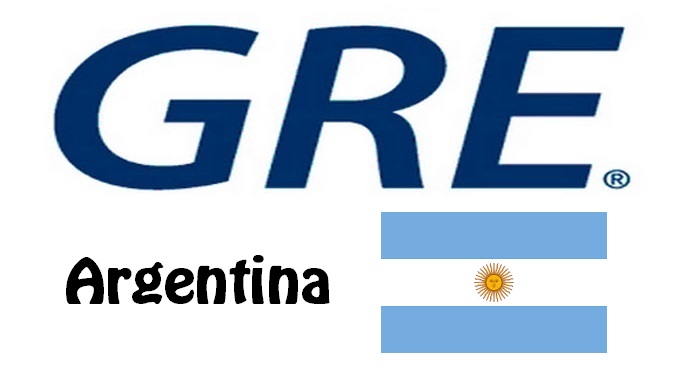GRE Testing Locations
Decided to take GRE exam? Now it is time to determine where to take the test. This site provides a full list of GRE testing centers in Argentina, among which, you can choose one that is nearest to you. Good news is that the following GRE test locations in Argentina offer both GRE general test and the GRE subject tests.
Paper-delivered Test Centers for General Test
| Code | Name |
| 10126 | Cordoba, IICANA |
GRE Test Dates
There are two types of test format offered by the test maker – ETS: Computer-delivered and Paper-delivered GRE general tests. For computer based test format, the GRE General Test is offered year-round on a continuous basis, and available for registration on a first-come, first-served basis. For paper based general test, testing is available three times per year. The following test dates apply:
| Test Dates for Paper Based | Deadlines for Registration | Scores Available |
|---|---|---|
| November 09, 2019 | October 4, 2019 | December 20, 2019 |
| February 1, 2020 | December 27, 2019 | March 13, 2020 |
GRE Subject Tests in Argentina
The GRE Subject Tests are available on paper based only. In all GRE test centers throughout the world (both inside and outside United States), the exam is available three times a year. The three test dates are:
- April
- September
- October

More about Argentina
Population
Argentina was a popular immigration country for European emigrants at the end of the 19th and beginning of the 20th century, as can be seen today in the population structure: 90% of the population are white with predominantly Spanish and Italian, but also German ancestors. The indigenous population has decreased to around 955,000 (2.3% of the total population). The members of Indian ethnic groups live today mainly in the Gran Chaco and in Patagonia / Tierra del Fuego.
The few blacks and Asians mostly live in the big cities. Around 5% of the population are mestizo, many of them immigrated in the 1960s, some illegally, from the neighboring countries of Chile, Bolivia and Paraguay.
The number of immigrants has been falling for years; on the other hand, after the economic crisis of 2002, the emigration of especially qualified people to North America and Europe increased sharply.
The average population density (2017) is 16 residents / km 2, but the regional differences are considerable. The urban population grew to 92% (2017). A third of Argentines live in the greater Buenos Aires area alone, one of the largest metropolitan areas in South America. In contrast, the population density in the south of the country (Patagonia) is less than 2 residents / km 2.
The social structure shows strong tensions. In rural areas, a small, rich and powerful group of large landowners (“estancieros”), who also form the upper class of the Argentine population, is opposed to the mass of poor small farmers and agricultural workers (“peons”). In the big cities, the traditional upper class is joined by a “new” upper class, whose members hold important positions in industry and in the service sector (including senior civil servants). The (lower) middle class (retailers, craftsmen, office workers) is also disproportionately represented here. The industrial workforce increased sharply, especially in the course of industrialization, and gained political influence. Traditionally, workers in Argentina enjoy extensive social protection, including: Working time regulations, Protection against dismissal, accident insurance, pension benefits and health insurance for free basic medical care. The health system in Argentina is better developed than in many other Latin American countries, but there is still a strong urban-rural divide.
The biggest cities in Argentina
| Largest cities *) (inh. 2017) | |
| Buenos Aires *) | 15 172 700 |
| Cordoba *) | 1 612 100 |
| Rosario *) | 1,339,500 |
| Mendoza *) | 1 053 500 |
| San Miguel de Tucumán *) | 902 200 |
| *) Agglomeration | |
Religion
The constitution guarantees freedom of religion, with the Catholic Church constitutionally entitled to support from the federal government. – According to the latest available estimates, 71–77% of the population belong to the Catholic Church and 10–15% belong to various Protestant churches and communities [evangelical and other (post-) Reformation Christians]. The largest non-Christian minorities are Muslims (approx. 1 to over 2%) and Jews (just under 0.6 to 0.7%). Between 8 and 11% of the population cannot be assigned to any religion.
Vegetation
The natural vegetation is primarily determined by the amount and seasonal distribution of precipitation. Evergreen and changing green subtropical rainforests and wet forests occur only in the extreme northeast (province of Misiones) and northwest (area Tucumán, Salta). In between lies the dry forest of the Chaco, which is partly dissolved like a park. In the south, the evergreen and evergreen forest is limited to the narrow mountain range of the Patagonian Andes. The area of the central pampas is also well watered, but due to the nature of the soil, there is no forest here, but a treeless grassland. The Monte scrub forest joins the Chaco and Pampa to the west and merges into the East Patagonian shrub and grass steppes in the south.

